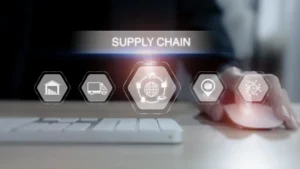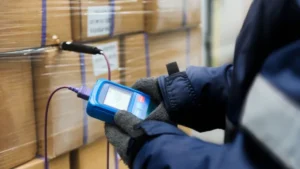In today’s fast-paced world, customers expect their packages to arrive quickly and efficiently. This has put immense pressure on logistics and courier companies. Last mile delivery is a critical component of the shipping process that ensures packages reach customers promptly. This blog will break down the essentials of last mile delivery, its challenges, solutions, and the importance of technology in this area.
What is Last Mile Delivery?
Last mile delivery means to be the last step of a delivery process. After a product leaves the warehouse, the goal is to get it to the customer’s doorstep. This phase can often be the most costly and complicated part of shipping. Companies aim to provide fast, reliable service while keeping costs low.
The term “last mile” does not literally mean a mile. The distance can vary significantly, depending on the customer’s location. Whether it’s in a city or a quiet rural area, companies must adapt their delivery strategies accordingly.
Challenges of Last Mile Delivery
Several challenges can arise during last mile delivery. Traffic congestion, road conditions, and customer availability can delay deliveries. For example, urban areas may have heavy traffic, making it difficult for delivery drivers to reach their destinations on time. In contrast, rural locations may have fewer transportation options and longer distances to cover.
Another significant challenge is the increase in online shopping. As e-commerce grows, so does the demand for quick deliveries. Customers want their orders as soon as possible, which puts pressure on companies to deliver quickly. This heightened demand can lead to missed deadlines, resulting in unhappy customers.
Importance of Last Mile Tracking
Companies have turned to last mile tracking to fight such challenges. This technology allows customers to see where their packages are at any given moment. Tracking provides valuable information that helps manage customer expectations. When customers can check the live status of their shipment, it creates a more positive experience.
Strategies for Effective Last Mile Delivery
Companies must employ effective strategies to succeed in last mile delivery. This includes optimizing routes, using the right delivery methods, and maintaining clear communication with customers. Here are some strategies companies can use to enhance their final mile delivery processes:
Route Optimization
Using advanced technology to plan the most systematic routes helps reduce delivery times and costs. Delivery software analyzes traffic patterns and road conditions, allowing companies to make real-time adjustments.
Flexible Delivery Options
Offering various delivery options can help meet customer needs. For instance, some customers may prefer evening deliveries after work, while others might want same-day or overnight shipping. Flexibility in scheduling increases customer satisfaction.
Local Land Transportation Service
Utilizing local land transportation services can also improve delivery times, especially in rural areas. Collaborating with local drivers who know the area well can enhance delivery efficiency.
Communication
It is crucial to keep customers informed about the complete delivery process. Notifying them about the status of their order, estimated delivery times, and any delays can help manage expectations.
The Role of Technology in Last Mile Delivery
Improvement in last mile delivery solutions can be made with the help of technology. The use of last mile delivery software has revolutionized how companies operate. This software allows for efficient route planning, real-time tracking, and data analysis. With the right technology, companies can enhance their delivery processes with effective cost.
Last mile delivery tracking systems enable customers to receive updates about their shipments. This transparency builds trust and increases customer satisfaction. When customers know where their packages are, they are more likely to feel confident in the service.
Moreover, technology helps companies analyze data to identify trends and patterns in their delivery operations. By understanding these trends, businesses can make informed decisions to improve their services. This might include adjusting delivery schedules, changing routes, or optimizing driver performance.
Measuring Success in Last Mile Delivery
It can be measured through various key performance indicators (KPIs). These metrics help companies assess their performance and identify areas for improvement. Some essential KPIs include:
- Delivery Time: The time it takes for a package to reach the customer after leaving the warehouse is a critical metric. Fast delivery cargo services often lead to higher customer satisfaction.
- On-Time Delivery Rate: This percentage indicates the number of packages that were delivered on or before the promised date. A high delivery rate signifies efficient operations.
- Customer Satisfaction: Collecting feedback from customers after delivery can provide valuable insights. Surveys and reviews can help companies understand what customers appreciate and where they can improve.
- Return Rates: Monitoring the number of returns can indicate problems with the delivery process. High return rates may suggest that packages are not arriving in good condition or that customers are dissatisfied with the product.
The Future of Last Mile Delivery
The future of last mile delivery looks promising, thanks to advancements in technology and a focus on customer experience. Companies will need to adapt and innovate to stay competitive in the market where e-commerce continues to grow. Expect to see more automation, artificial intelligence, and data analysis in delivery processes. Autonomous vehicles and drones may become more common for last mile logistics, particularly in urban areas. These technologies and new ways can help reduce delivery times and costs while improving efficiency.
By focusing on speed, transparency, and customer satisfaction, businesses can improve their last mile delivery services. Companies like Travelite are leading the way in optimizing this critical part of logistics. By investing in the right solutions, they ensure they meet customer expectations and remain competitive in a rapidly changing industry.










